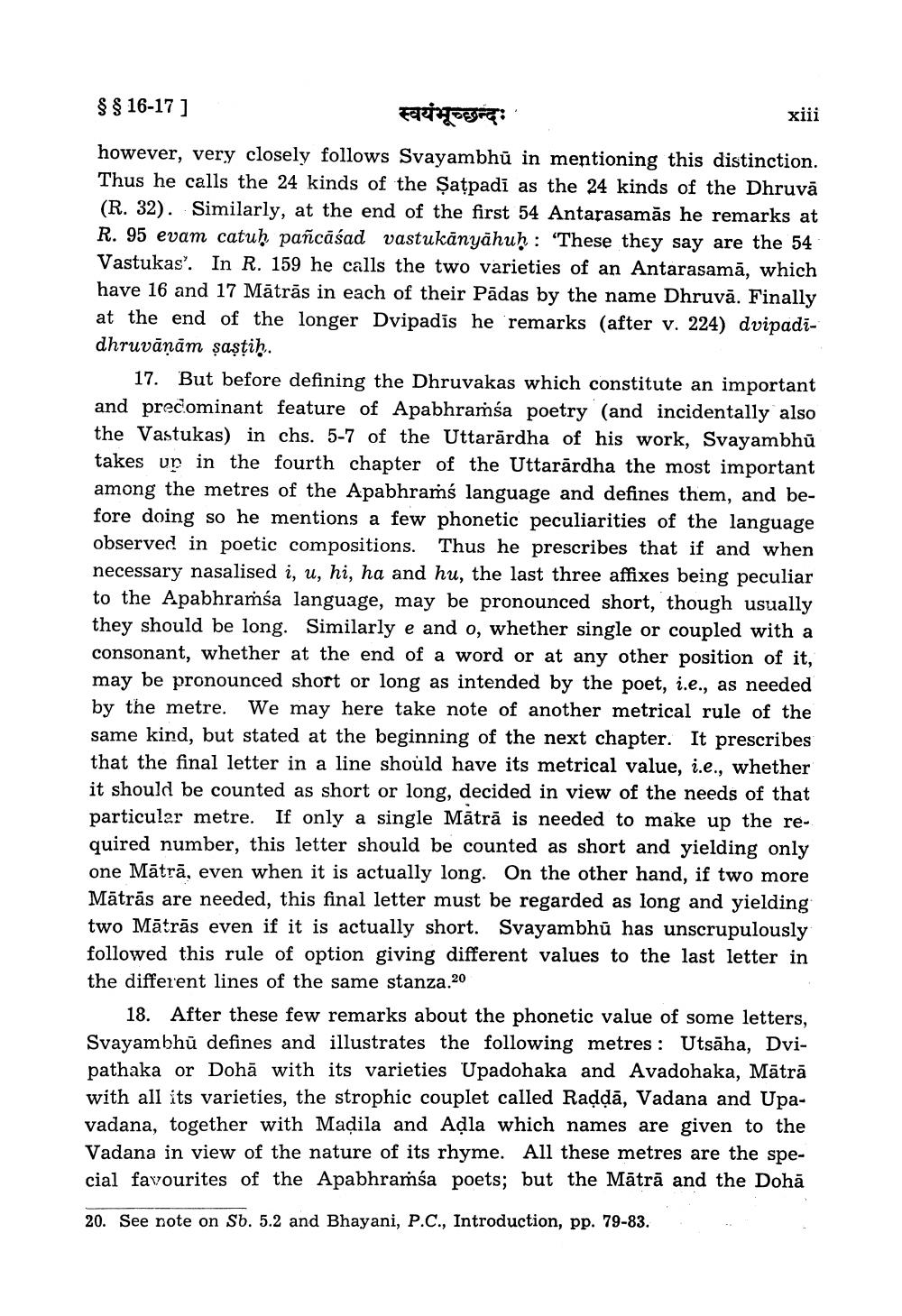________________
§ § 16-17 ]
स्वयंभूच्छन्दः
however, very closely follows Svayambhu in mentioning this distinction. Thus he calls the 24 kinds of the Satpadi as the 24 kinds of the Dhruvā (R. 32). Similarly, at the end of the first 54 Antarasamās he remarks at R. 95 evam catuḥ pañcāśad vastukänyahuḥ: "These they say are the 54 Vastukas. In R. 159 he calls the two varieties of an Antarasamā, which have 16 and 17 Mātrās in each of their Pādas by the name Dhruvā. Finally at the end of the longer Dvipadis he remarks (after v. 224) dvipadidhruvāṇām sastih.
xiii
17. But before defining the Dhruvakas which constitute an important and predominant feature of Apabhramsa poetry (and incidentally also the Vastukas) in chs. 5-7 of the Uttarardha of his work, Svayambhu takes up in the fourth chapter of the Uttarardha the most important among the metres of the Apabhramś language and defines them, and before doing so he mentions a few phonetic peculiarities of the language observed in poetic compositions. Thus he prescribes that if and when necessary nasalised i, u, hi, ha and hu, the last three affixes being peculiar to the Apabhramśa language, may be pronounced short, though usually they should be long. Similarly e and o, whether single or coupled with a consonant, whether at the end of a word or at any other position of it, may be pronounced short or long as intended by the poet, i.e., as needed by the metre. We may here take note of another metrical rule of the same kind, but stated at the beginning of the next chapter. It prescribes that the final letter in a line should have its metrical value, i.e., whether it should be counted as short or long, decided in view of the needs of that particular metre. If only a single Matra is needed to make up the required number, this letter should be counted as short and yielding only one Mātrā, even when it is actually long. On the other hand, if two more Mātrās are needed, this final letter must be regarded as long and yielding two Mātrās even if it is actually short. Svayambhu has unscrupulously followed this rule of option giving different values to the last letter in the different lines of the same stanza.20
18. After these few remarks about the phonetic value of some letters, Svayambhu defines and illustrates the following metres: Utsäha, Dvipathaka or Doha with its varieties Upadohaka and Avadohaka, Mātrā with all its varieties, the strophic couplet called Radḍā, Vadana and Upavadana, together with Maḍila and Aḍla which names are given to the Vadana in view of the nature of its rhyme. All these metres are the special favourites of the Apabhramśa poets; but the Matrā and the Dohā
20. See note on Sb. 5.2 and Bhayani, P.C., Introduction, pp. 79-83.




